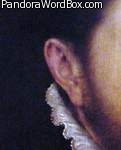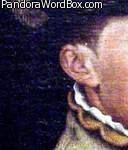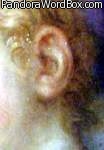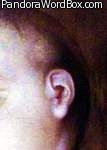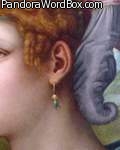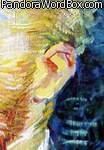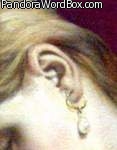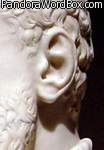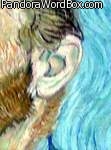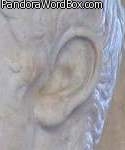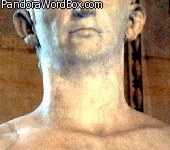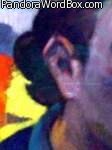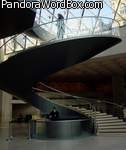|
× UKRAINIAN CHILDREN WITH DISABILITIES HAVE SPECIAL NEEDS |
EAR AURICLE PINNA OTIC OTOLOGY
Audible Auditory Audience Auscultate
Acustic Acute Acuse Tone Atone Tune Tympanum Tympani
Tinnitus Timpanic Panic
An EAR, PINNA or AURICULAR AURICLE stands out like a PIN or GILL or sPINining sPIRAL and produce a BREAK on the facial landscape, akin to sounds that BREAK silence and induce us to "lend an EAR" or to LISTEN, or to pay attention.
"Pealing Bells" can make our ears ring and so can other causes of Tinnitus. These "word ideas" link the sense of hearing with "tone". To "peel" or BREAK or hear the earth means to PLOUGH or PLOW, in Ukrainian ORATY and in Spanish is ARAR linking these ideas with Indo-European and Frisian root AR for to plow and for ear. This explains why we "ear" corn and "lend our ear" to oral oratory oratorios.
Ears portrayed by recognized artists
The above should open AIROC;ES (ears) to additional ideas in HELIX, TRAGUS PINNA and DEAF.
MORPHEUS insured that AURICULAR or external ear MORPHOLOGY is highly personal. Some time ago, FORENSIC experts used ear morphology to identify suspects. The component parts are the HELIX (rim), the ANTIHELIX or ANTHELIX, TRAGUS and ANTITRAGUS. The external ear canal orifice or opening is the MEATUS (passage) and internally ends at the EARDRUM or TYMPANUS or TYMPANIC (from Latin tympanon for drum) MEMBRANE. The middle and inner ear anatomy is complex. The middle ear includes three miniscule bones: MALEUS (MARTILLO or MOLOTOK in Spanish and Ukranian); INCUS (anvil) and STAPLES (stirrup or ESTRIBO in Spanish). This bony chain magnifies tympanic vibrations and transmits them to the inner ear. The inner ear includes the cochlea (in Greek kochlias for snail or conch shell) which transforms vibrations into nerve stimuli that are translate as hearing and a labyrinth (from the famed Minoan amazing maze) filled with endo-lymph (as pure as nymphs) which preserves our balance. The labyrinth includes three semicircular canals that end in the fenestra vestibuli (windows in a vestibule or entry) and in an utricle (a bag or uterus like sac) or ampullae (two handed flask) which has a crista or crest or roosters comb like. The labyrinth is populated by ciliated cells which send impulses via the vestibular nerve which are translated into muscular contractions that preserve our balance.
In medical terms, many children are born DEAF and benefit from early recognition and therapeutic interventions. Thus, neonatal screening for deafness is now increasingly common. Children no longer have to be condemned to be DEAF-DUMB nor to be victims of NEUROTOXIC drugs like streptomycin. Being deaf does not mean that the person lacks a SENSE of hearing as Beethoven did.





